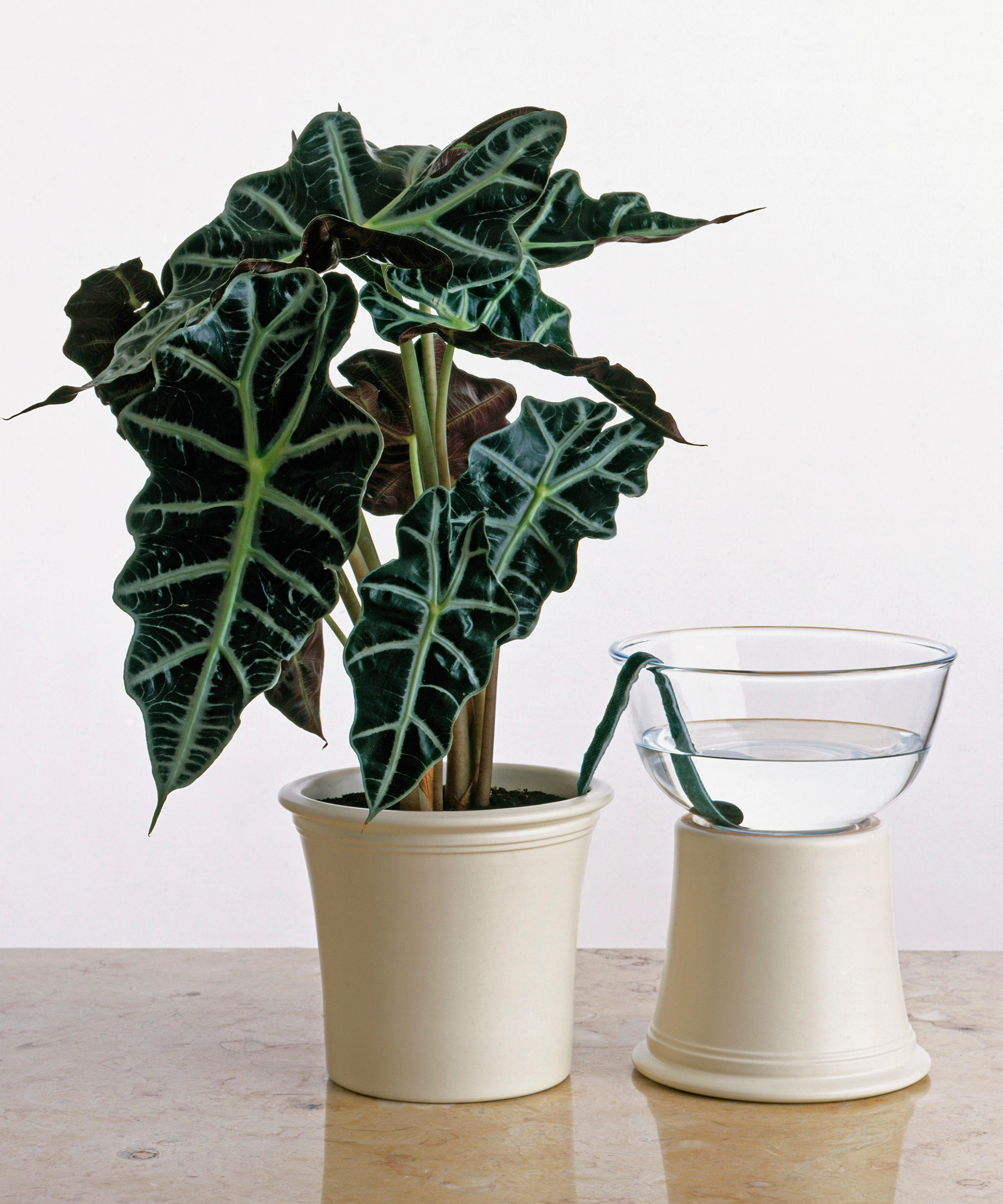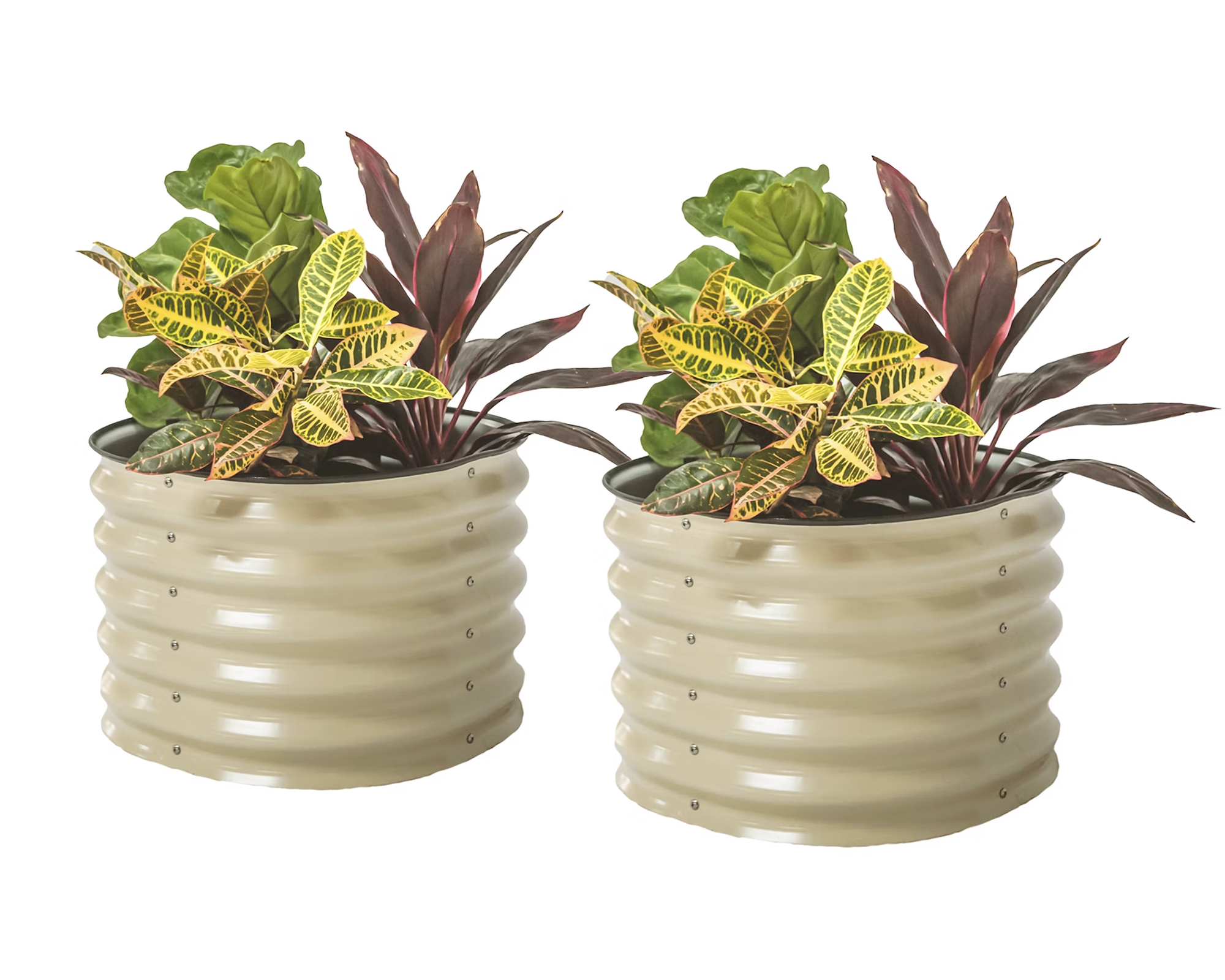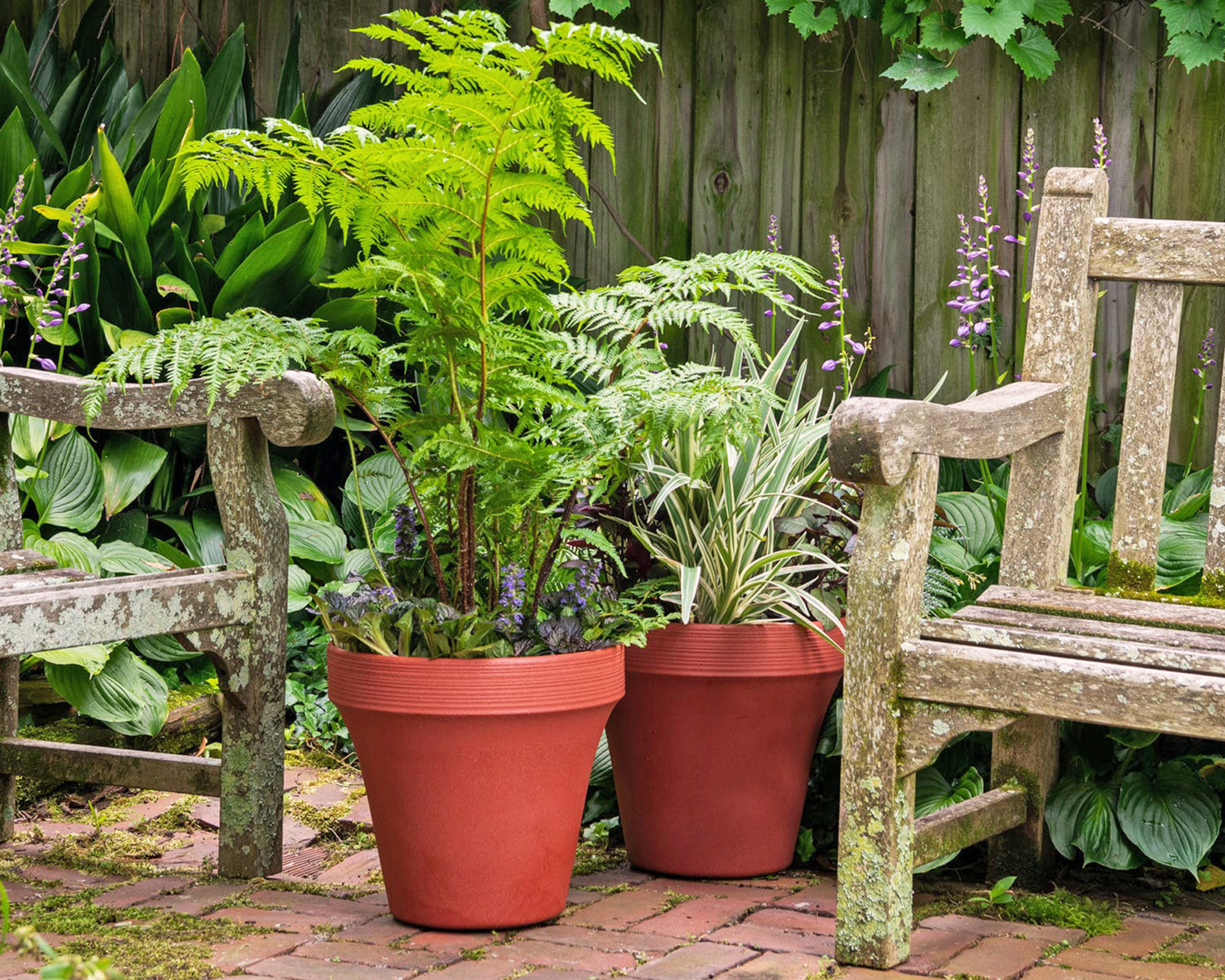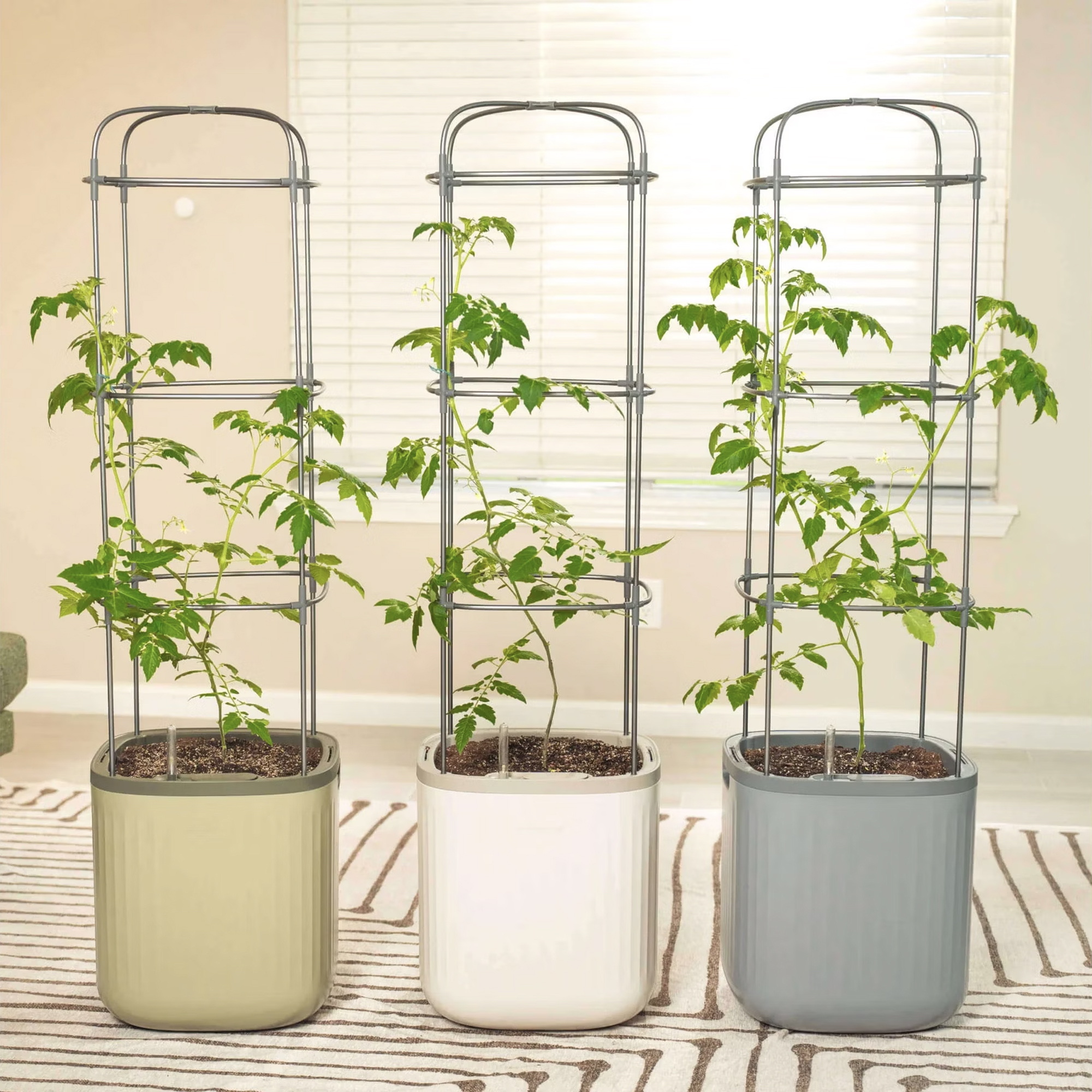6 Clever Self-Watering Plant Pot Ideas To Take The Stress Out Of Watering
Keep your indoor and outdoor plants hydrated with these easy, low-effort planter ideas – perfect for vacations, busy lifestyles, and forgetful gardeners.


After the initial potting of your indoor and outdoor plants, keeping them alive becomes your most important – and potentially most stressful – task. Knowing when and how much water to give plants is often cited by gardeners as their number one concern. A self-watering plant pot goes a long way in alleviating that worry.
These clever containers provide plants with ready access to additional water on an as-needed basis. This extra water allows you to put watering out of mind for days or even weeks, depending on the plant and its position. Patio plants, for example, are often subjected to hot and dry conditions, causing them to wilt and requiring water on a near-daily basis. Self-watering pots help plants pull through those stressors with flying colors.
Keeping plants watered while on vacation is another compelling reason for potting up your plants in self-watering planters. And when you return home, you might just find your plants are even healthier than when you doted on them every day. If knowing when to water and how much stresses you out, this method of precise watering can start you on your path to excelling at plant parenthood.
The self-watering container technology is simple science. It’s based on capillary action, or the ability of a liquid to move within spaces of a material through the forces of adhesion, cohesion, and surface tension. We can create our own simple self-watering containers using capillary action, also known as wicking. All-in-one self-watering containers are available on the market, as well. Here, we explore the best self-watering plant pot ideas to keep your plants happy and healthy.
1. DIY Bowl and String Method

A DIY self-watering system for houseplants is as easy as using a big bowl and a length of thick string such as yarn or butcher’s twine. Try this first as an experiment so you can see the wicking method in action for yourself:
- Fill a glass or bowl with water, and place into it several inches of one end of a string. Let the string drape over the side of the vessel. After a few minutes you may notice a small puddle of water under the string. The water in the vessel moved by capillary action up and along the string. This is how we’ll transfer water from a larger bowl to a potted plant.
- Use a pencil or your finger to create a 1- to 2-inch hole on the surface of your potted plant. Bury one end of the string into this hole and place the other end in a water-filled bowl.
- For the water to move from the bowl to the plant, the bowl’s water level must be above the pot, and the string must be relatively straight from the bowl to the pot. Water will transfer from the string to the potting soil, and through further capillary action, transfer throughout the entire pot until it has reached equilibrium.
This is a quick and simple way to set up a self-watering system if you’ll be away for an extended period. Simply place a large water-filled bowl or bucket on a chair or table, insert multiple strings and clip them to the bowl’s rim, and insert the ends into your plants below it. Bon voyage!
2. Wicking Houseplant Pots

Wicking through a length of string is the technique used by all of the houseplants available in the Gardening Know How Houseplant Shop. Each houseplant is potted in a self-watering planter, which is a pot-in-pot system.
Sign up for the Gardening Know How newsletter today and receive a free copy of our e-book "How to Grow Delicious Tomatoes".
A solid pot (i.e. no drainage hole) acts as a water reservoir, and an interior planting pot affixed with a wick sits inside. The wick transfers water from the reservoir into the root zone. A small window at the planter’s bottom lets you monitor the reservoir’s water level. To add water, simply remove the interior pot and fill the reservoir to the indicator level.
3. DIY Container, Bottle & Saucer
To create a more permanent self-watering system that is ideal for larger (3-gallon plus) outdoor plastic or resin containers, you’ll need a solid (i.e. no drainage holes) large container, a 1-liter plastic bottle, a heavy-gauge plastic saucer, a length of 1-inch-diameter PVC pipe that is taller than your planter, a drill, and a small saw. The plastic saucer should be able to sit within your large planter and allow for about 4 inches (10cm) of space between it and the bottom of the container.
- Drill a dozen or more ½-inch (13mm) diameter holes into the lower half of the plastic bottle.
- Using the saw, cut out a hole in the middle of the saucer that is just big enough to insert the plastic bottle.
- Place the saucer-bottle apparatus into the planter and push the bottle down enough so it touches the bottom of the planter.
- Make a mark on the bottle just above where it sits in the saucer, then cut along that line to remove the upper portion of the bottle. A small rim of plastic bottle should stick up from the saucer when the apparatus is in your container.
- You’ll make another cut in the saucer (wherever there’s room between its edge and the bottle) just wide enough to insert the PVC pipe. Drill a few holes through the lower portion of that pipe.
- Place the saucer-bottle-pipe apparatus into the planter. Make a mark on the upper portion of the pipe that is about 2 inches above your planter’s rim and cut off that top portion. You’ll add water to your planter through this pipe.
- Drill one last hole, this time through the wall of your container just under where the saucer sits. This is the overflow hole and will ensure your potting mix will not become waterlogged.
- Place your potting mix into the container and plant! The portion of the mix that sits in the perforated bottle below the saucer will wick water up into the root zone.
4. Soil Cells

The Vego Self-Watering Planter, available in the Shop, is equipped with a similar soil wicking system. A series of cells at the bottom of the planter collects excess water and reserves it. Perforated soil-containing cells wick up the water and help to distribute it through the root system as the soil dries.
A system such as this helps to conserve water by collecting overflow and making it available for the plants’ use. It also helps to lengthen the time between watering, so you spend less time worrying about your plants. And because the wicking cell system forms the base of the planter, it can be used both indoors and outside on a patio or balcony without damaging the floor surfaces.
5. Pot-in-Pot Planters

Crescent Garden’s TruDrop Flex Self-Watering Planter Insert, available in the Shop, is a pot-in-pot system designed to sit inside the brand’s Step, Ridge, and Fold Planters. These inserts are plantable interior pots with perforated “legs” that sit inside the planter.
Fill the solid planter via an access point on the TruDrop Planter Insert. Water will be absorbed via the Insert’s perforations. A water level gauge indicates when your planter needs more water. The TrupDrop Flex Inserts can go up to six weeks without needing watering.
The Flex Ridge, Fold, and Step planter models can be used both indoors and outside. If using outside, the planter will need an overflow hole drilled where indicated on the planter.
6. Self-Watering Solutions for Patio Veg

Keeping vegetables adequately watered during the growing season is key to their ability to fight off pests and diseases and produce a bountiful crop. The Vego Self-Watering Rolling Tomato Planter Pot with Trellis, available in the Shop, provides a fast-growing crop with a ready supply of water. This planter utilizes a pot-in-pot watering system. Add water to the pot’s reservoir via an external access point, and the internal pot’s wicking system distributes it throughout the planter. A water level gauge indicates when to refill.
Easily attached wheels let you move the planter to an ideal growing location, while the adjustable trellis keeps your crops stable as they grow – whether its tomatoes, peppers, eggplants or any plant needing extra support.
Explore the Gardening Know How Shop for our full range of self-watering planters and leave the stress of knowing when and how much to water behind.
This article features products available from third party vendors on the Gardening Know How Shop.

Ellen Wells is a horticultural communications consultant with 30 years of experience writing about all aspects of the gardening world.
She has worked for many of horticulture’s biggest brand names, writing blog posts, articles, press releases, and design and instructional pieces. Her previous roles include Senior Editor and Editor-at-Large for Ball Publishing.
Ellen is based in New England where she gardens in Zone 7a. She loves tending to flower-filled containers on the patio and puttering around her vegetable garden.